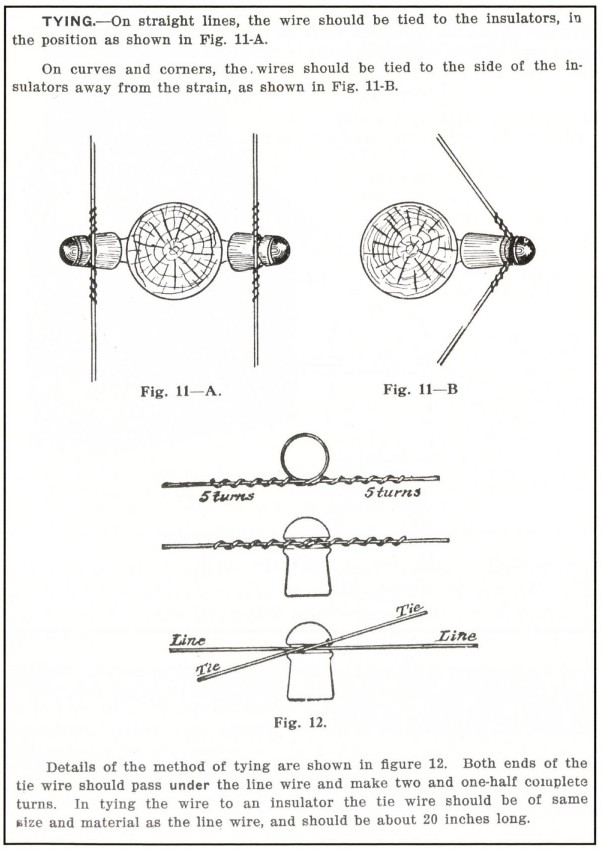RURAL TELEPHONE LINES & HOW TO BUILD THEM
Reprinted from "Crown Jewels of the Wire", May 2006, page 8
Book Review
This 30 page booklet was first printed in the early 1900's by the Montgomery
Ward Company to sell telephone equipment manufactured for the company. It was
re-printed in 1970 by Glen Razak after insulators became collectible.

The booklet describes in detail how to construct rural telephone lines using
bridging telephones that did not require switchboards. It explains how to select
and plant the poles, how to string the wire, and advises its readers against
using ordinary fence wire for telephone wire.

The brochure explains that for each mile of line, the following materials
would be needed:
96 pounds of No 14 galvanized iron wire. Price: $4.21 per 100 pounds.
30 No.9
pony glass insulators. Price: 2-cents each.
30 painted oak brackets. Price: 1.25
cents each.
30 40-penny nails.
30 60-penny nails. Price for nails: $2.30 per 100
pounds.
The total cost per mile, not including poles, was $5.22. The shipping weight
for the material was 145 pounds.

Much of the brochure is devoted to advertising the telephones themselves. The
Diamond Bridging Telephone shown below was priced at $12.65. Other models
were priced as low as $9.60.
Wards was rather confident in the quality of its phones. The brochure states,
"We guarantee every part, as well as the complete instrument. There is
absolutely no limit to the guarantee."

The catalog also list a host of accessories from batteries, to climbing
hooks, to wire stretchers and other tools. The only insulators offered were a CD
102 glass pony style, and porcelain knobs to be used when connecting telephone
wire to the ground rod.
The 1970's reprint of this booklet shows up for sale from time to time.
Printed on paper to look old, the reprint shows a number of collectible
insulators and telephones on the first page. Most of the rest of the booklet is
a reproduction of the Montgomery Ward's catalog.
An original from Montgomery Ward would be a collectible all its own.
| 